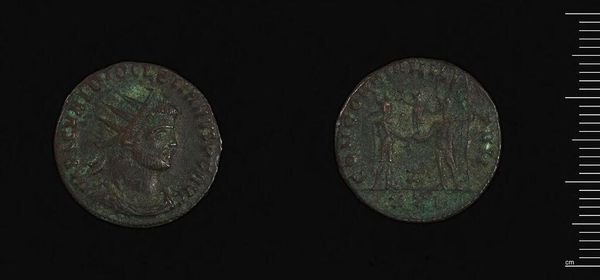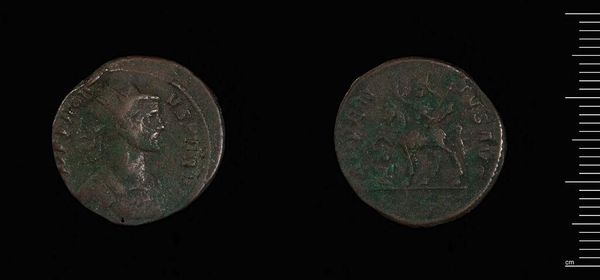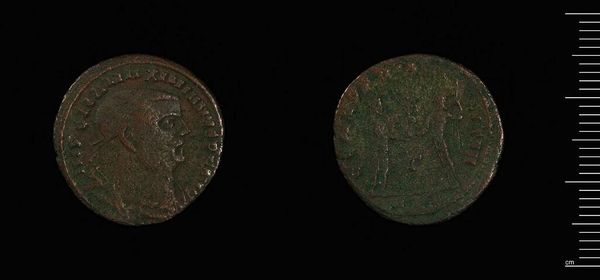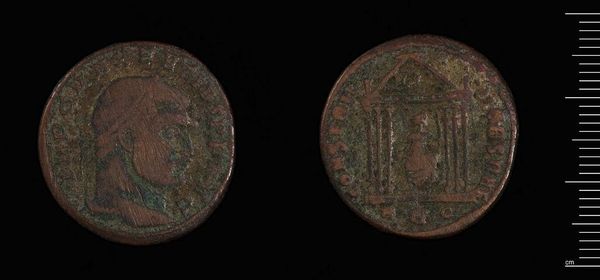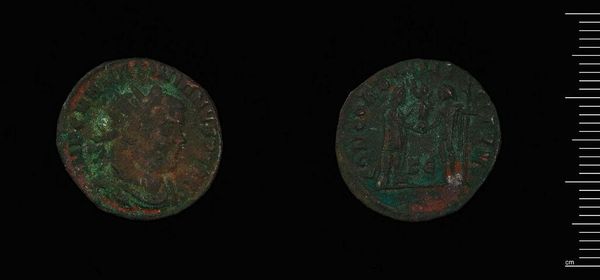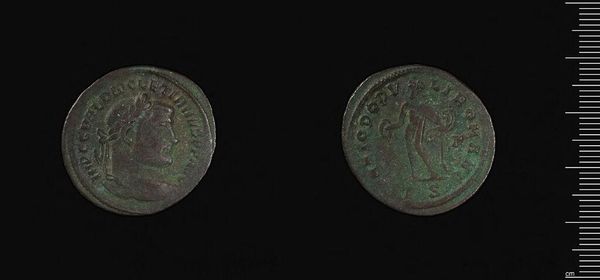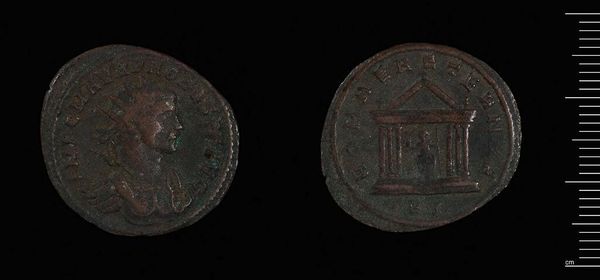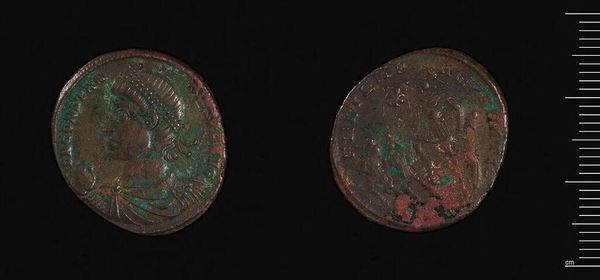
Dimensions: 3.39 g
Copyright: CC0 1.0
Curator: Here we have an Antoninianus of Diocletian, minted in Heraclea. This coin, currently residing in the Harvard Art Museums, offers a glimpse into the economic and political landscape of the Roman Empire. Editor: It's remarkable how this small, worn coin carries so much history. The texture alone speaks volumes of its journey through time and trade. Curator: Absolutely. The Antoninianus was introduced as a response to economic instability, and seeing it now, we can trace Diocletian's efforts to stabilize the empire through monetary reform. Editor: And that debasement! Notice how little silver it actually contains. An emperor's portrait rendered in increasingly base metals – a potent symbol of power in decline, or perhaps adaptation? Curator: Precisely. The imagery, though faded, reveals clues about imperial propaganda and how rulers wished to be perceived. Editor: Seeing the wear on this material, considering the hands it passed through, it’s a tangible link to everyday life under Diocletian. Currency as a material witness. Curator: It's a poignant reminder that even the smallest objects can illuminate the grand narratives of history. Editor: Indeed. Each coin tells a story not just of emperors, but of the society that forged and used them.
Comments
No comments
Be the first to comment and join the conversation on the ultimate creative platform.
